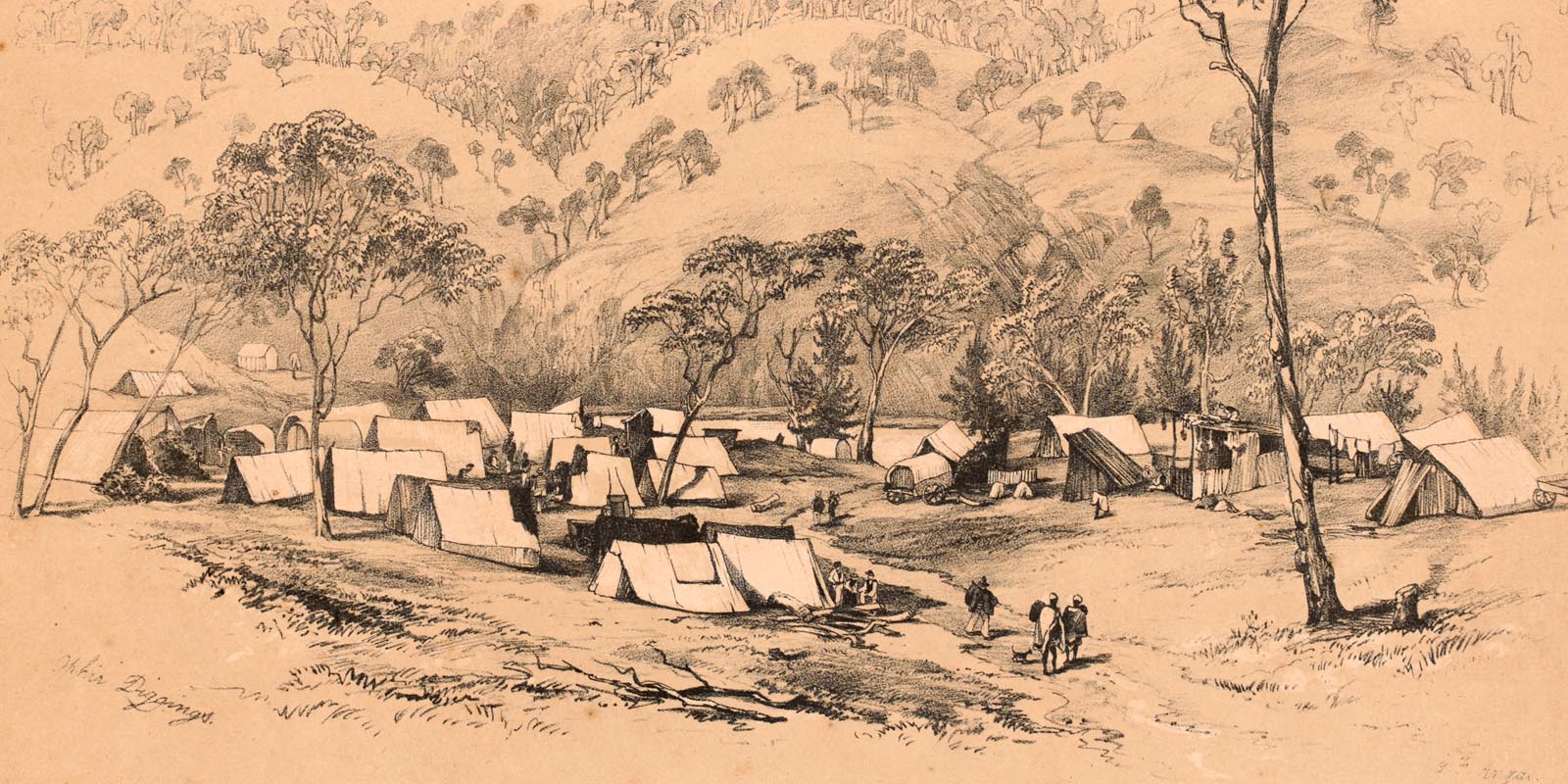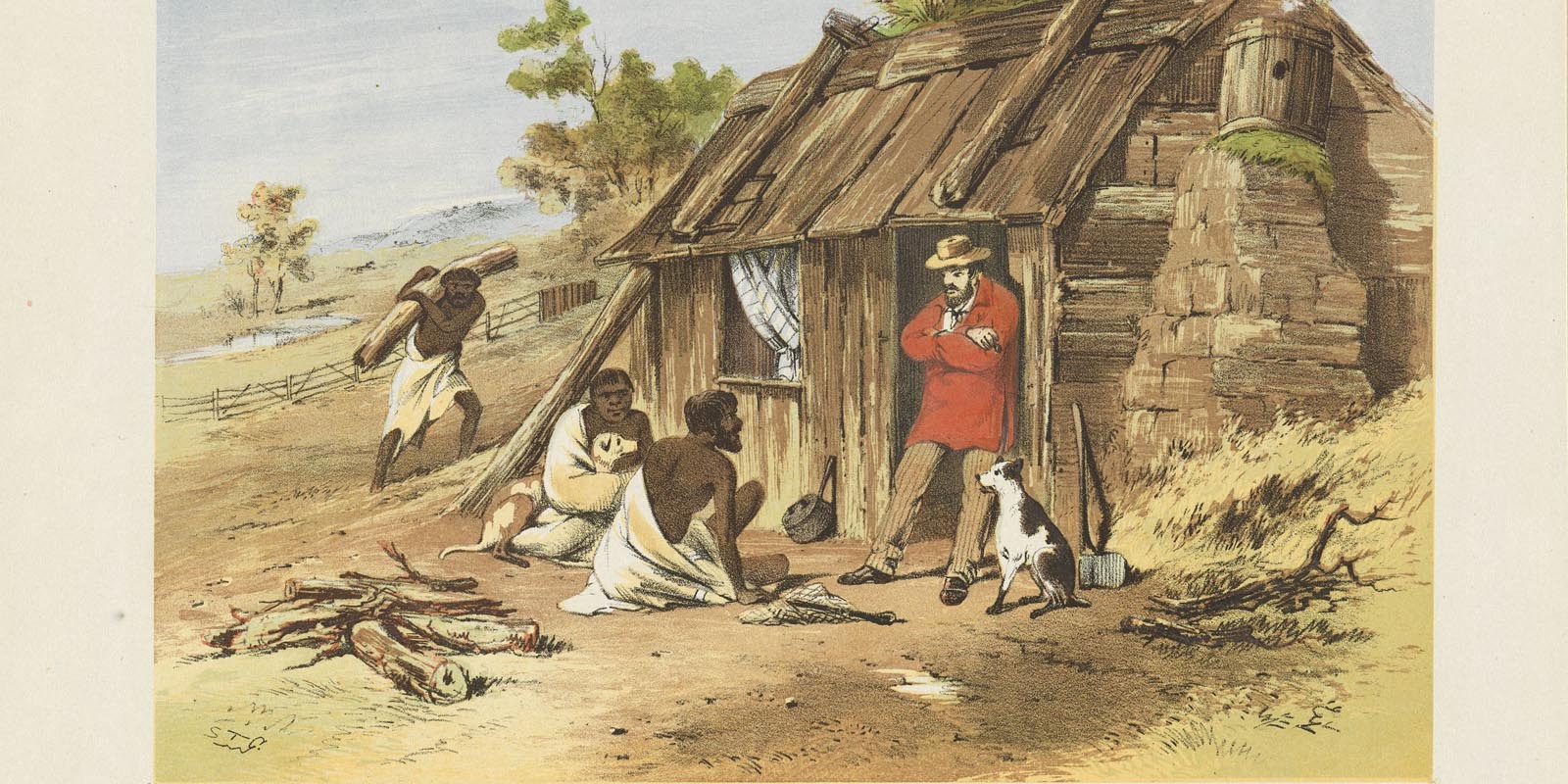The ‘discovery’ of gold in Victoria in 1851 significantly changed the way the colony functioned. While gold had already been found a few times by colonists it had been hidden from the public in fear that a mutiny would occur if the convicts were to know they had gold within reach.
This attitude adapted however after the news reached the colony of the California gold rush. Thousands of colonists left for California in search of fortunes in the form of gold. This created a labour shortage which led to an economic depression. In 1849, the British government appointed Samuel Stutchbury, a government geologist and offered a reward of £10,000 prize to anyone who found a profitable amount of gold.
The first official discovery of gold was in NSW in 1851 by Edward Hargraves in a place he named Ophir after a port city of great wealth mentioned in the Old Testament, and by May 1851, 300 diggers had arrived in Ophir.
As the gold rush began in the colony of NSW, men were leaving the colony of Victoria to try their luck in finding gold. this caused another labour shortage for the southern colony. To combat this the government offered a £200 reward to anyone who could find gold within 200 miles of Melbourne. Within the next six months gold was discovered around Clunes, Ballarat, Castlemaine and Bendigo, on Wathaurong, Jaara/Dja Dja Wurrung and Taungurung countries. The Victorian gold rush accounted for over a third of the world's gold production that decade.


Ophir Diggings, New South Wales with Aboriginal Women in the foregroud. Image source: State Library of Victoria.
Aboriginal people and the gold rush
The Gold Rush had significant impacts on the lives of Aboriginal people. The Mobs on whose Country gold was mined faced huge upheaval as a huge influx of settlers came to their land. Much of their country was destroyed by mining and Mob were further dispossessed from their lands.
Aboriginal people also played a key role during the Gold Rush and showed the strength to survive in these hard times. We shared our knowledge of the land to hungry diggers, traded items with the miners and some of our people even became members of the Native Police Corps, who were some of the first law enforcers on the goldfields. They were tasked with checking licences and riding along with the Government Gold Escort protecting miners' gold from bushrangers.
They also traded and sold possum skin cloaks, fish, and meat such as possum and would assist miners who had become sick or lost. The model of our shelters also became frequently used by miners


Bushman's hut. 1865 by S.T. Gill. Image source: National Gallery of Australia.
A Changing Society
There was a migration boom as a result of the discovery of gold and within a year of the rush around 90,000 people migrated to Victoria in search of gold and in the 20 years that followed Australia’s population grew from 430,000 people to 1.7 million.
This population growth meant that the colonies were now filled with a multitude of different races, religions and ideologies. It wasn’t a happy time as many of the newcomers were non-European and were oppressed and discriminated against by the government. The largest non-European group of miners were Chinese, and by 1855 there were around 20,000 Chinese people working in the Victorian diggings. Many new political ideas and beliefs came with those who migrated into the state and the country causing conflict as the more conservative colonists resisted.
Today there are many families currently in Victoria who are descended from those who migrated here during the gold rush. The gold rush and resulting migration boom redefined Victoria and Australia as a whole.
Sources
- Gold rushes, National Museum Australia
- Gold rush history, Visit Victoria
- Aborigines & the gold rush, State Library of Victoria
